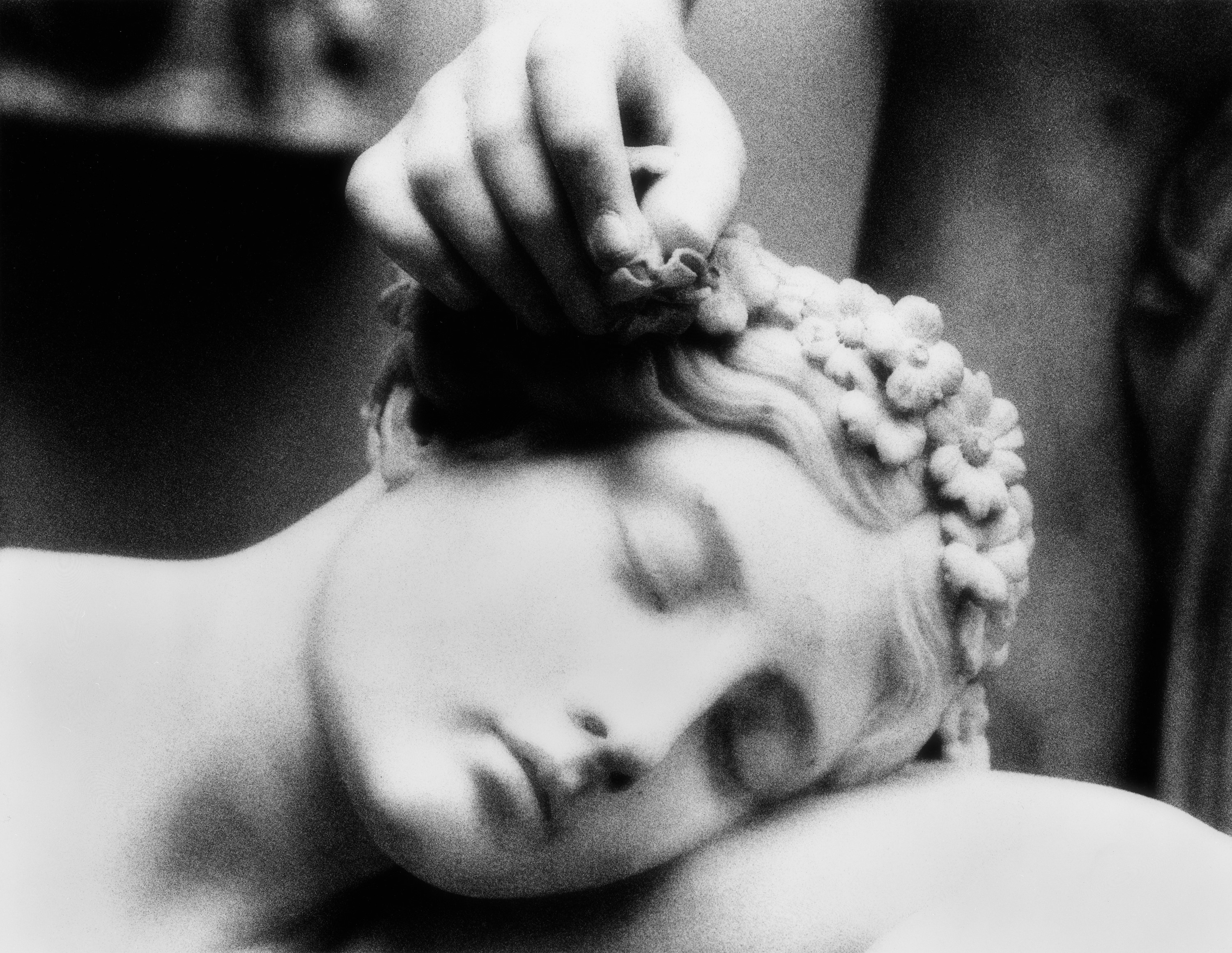By Jeff Maisey
A mixed media art exhibit examining a diverse perspective of death isn’t what you might expect to find displayed on the walls of a trendy downtown Norfolk restaurant, but, as it turns out, “The Art of Dying” is just the conversation starter for date night chow at Commune NFK.
The exhibit is the brainchild of well-known photographer and videographer John Wadsworth. Wadsworth, who curated the show in conjunction with the Rutter Family Foundation, is also the founding editor and creative director of Art of Dying Magazine, a glossy publication that focuses on multiple perspectives of death, particularly through the arts.
As it turns out, Wadsworth has had a lifelong interest in the art of dying. Every culture, after all, from the ancient Egyptians to Tibetan monks, pagan worshipers of the spiritual elements to devout believers of Islam, Christianity and Judaism, has its take on what happens in the afterlife. There are those, too, who see no evidence or logic of life after death.
Still, everyone dies. It’s a given – “as sure as you’re born,” my grandmother liked to say. Nobody escapes death. It comes for us all, and therein lies the fascination.
Death has for centuries captured the imagination of writers, filmmakers, playwrights, musicians, and artists.
Wadsworth’s “The Art of Dying” is an intriguing approach highlighted by grainy black-and-white photographs of graveyard statues, a 3-dimential “floating” sculpture, storytelling video, and more. Each piece, including works by Charles Rasputin, Sarah Treanor, Robin Rogers, Pia Interlandi, and Wadsworth himself, is unique in its approach to conveying the emotion of death’s reality.
Following is a brief interview with John Wadsworth regarding “The Art of Dying.” Read it and then go view it. Yes, a viewing…
Everyone has an opinion/belief as to what happens after he/she dies. What do you believe and why?
I believe that life cannot be measured by the parentheses of human birth and death. Third dimensional embodiment arises, evolves and dissolves, but not our eternal consciousness, our eternal identity as Life Itself. I believe this because my self-awareness is not limited to the phenomenal world while embodied, thus, my self-awareness will not end when separated from this body.
Everyone dies. What is it about death that creates both fear and hope?
Death represents the ultimate challenge to identity. Those who have lived as though the physical world is the sum total of reality will fear the loss of identity. They will also hope that they will survive, be “saved,” and survive in an ideal realm—a heaven, a nirvana. Those who have not lived as though the physical world is the sum total of reality relax into the death process, feeling a continuance that is not dependent upon human identity.
How did the magazine Art of Dying get its start?
Throughout 6 years of evolving www.deathknells.com, posting over 2,000 quotes and passages that alleviate the fear of death, I met a unique population of death aware people. I wanted to create a non-threatening presentation of the life enriching benefits of cultivating a creative, self-directed death awareness. Art of Dying has succeeded in sharing authentic affirmations that death can be celebrated as the apex rather than mourned as the end of physical existence.
Why is it important to share the diverse array of viewpoints associated with death?
Because no two humans have lived the same life, no two humans will experience the same death.
Regarding the exhibit at Commune, what were you looking to communicate via your selection of art and artists?
That death is a healthy, life enhancing influence. I gathered artists who have transmuted grief into beauty, fear into acceptance. These artists also reveal death’s omnipresence in every facet of our daily lives.
The exhibit features mix media. Are people/viewers more impacted by storytelling video, dramatic physical displays or photography?
Thus far, the response has been equal among the mediums, including the Virtual Reality, with the universal effect being a lingering reflective resonance after viewing the exhibition.
Has the exhibit changed the way some view death?
I have received many affirmations of how Art of Dying has shifted perspectives on death and dying. I intuit that most people expected Art of Dying to be funereal. People have shared being emotionally and aesthetically engaged, but not depressed—exactly the attitude we should cultivate toward death.
Any final thoughts on the Art of Dying exhibit?
On November 19, Commune is hosting a Death Cafe with the theme, “The Art of Conscious Dying” featuring Tarron Estes, the founder of the Conscious Dying Institute of Boulder, Colorado. With this Death Cafe and two Savasana, “Death Yoga” classes, Art of Dying’s message expands beyond passively observing art to active life experience.
If you decide to be buried in a traditional grave, what would you have written as your epitaph?
A Japanese Enso
WANT TO GO/SEE?
Art of Dying
Curated by John Wadsworth
Through December 15
Commune NFK





